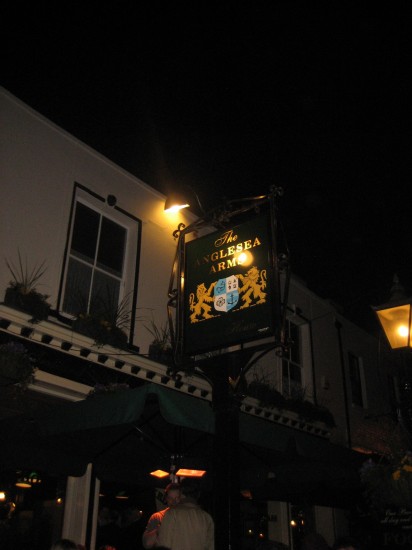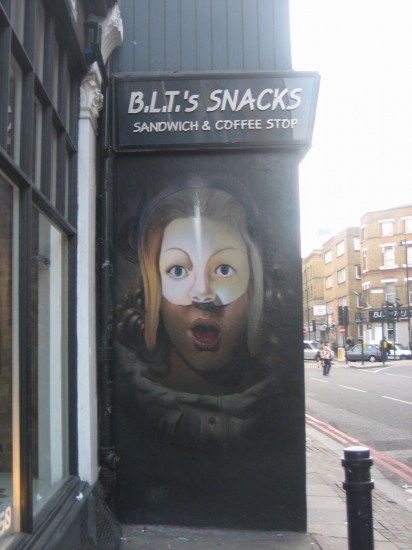by Jude Rogers.
2. Connecting Lines
When a few precious hours pop up in my week, between doing different things in different corners of town, I look at the distances between places, then my watch, then my shoelaces. If everything comes together, I take a breath and hit the pavements.
This is where London comes into its own.
It’s 4.30pm on a bright, clear Wednesday. I’ve just done an interview with an upcoming pop star, Bambi-eyed and fur-coated in a trendy Shoreditch bar. Later this evening, I will go and see Suede at the Royal Albert Hall, meeting some friends first for a drink at Chelsea’s Anglesea Arms. Between musical appointments, it’s six miles through the backstreets. Coffee, camera and calf muscles, taking me on.
a. Shoreditch, the home of the seedy, the arch and the arty, is fast becoming another colony of the glittering West End. Walking down Curtain Road, bars beam at you brightly. Shops dazzle you in. Even graffiti gleams at you cleanly, with no hint of menace.
But there remains the odd moment when your eyes drift from the light. In one of these, I find a shop sign announcing a shuttered snack bar, a mouth gaping at me, my eyes stretching wide.
b. A straight line takes me away to the city’s cold heart. The browns and greys of Broadgate are unhomely, unwelcoming. Shards of public art leap up and attack, making me feel like a trespasser on private land. In the middle of them, Richard Serra’s Fulcrum juts out – a sculpture made of fifty foot sheets of dark, rusted, metal. It looks like the Space Odyssey monolith falling to pieces, its separate parts leaning sadly on each other. Bankers swarm around them regardless, feeding from their fading power.
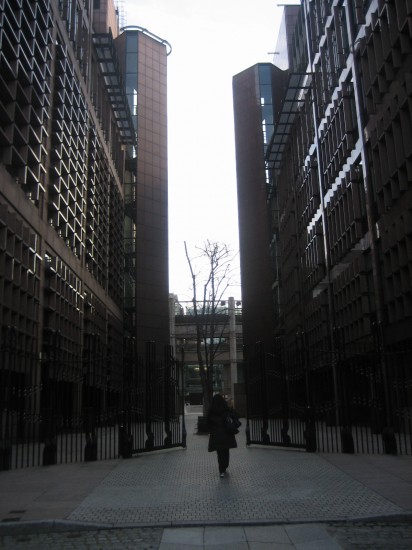
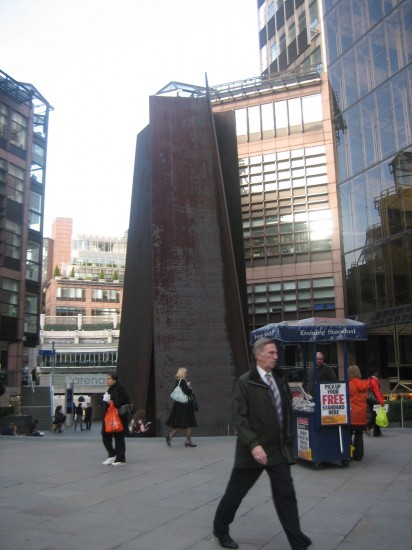
c. Towards Cheapside, I find lots of shadowy warrens. Great Swan Alley going gingerly towards Masons’ Avenue, where finely-cut suits huddle around pint glasses. On my A-Z, I am drawn to Prudent Passage, but it is, perhaps fittingly, impossible to find. The Streets of Bread and Milk, and the Lane of Honey, lift me up; telling us about the trades that went on long before we were alive. I smile. As the city’s present takes off its tie nearby, its past is still with us, still living, still working.
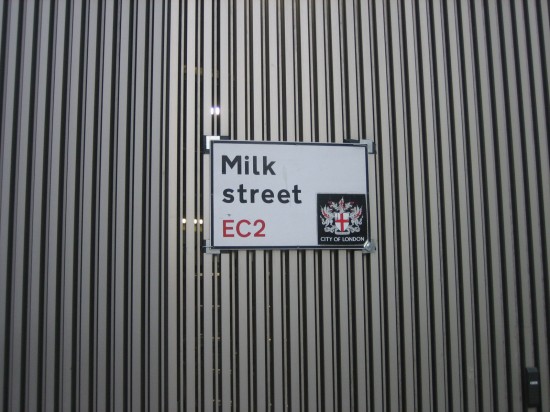
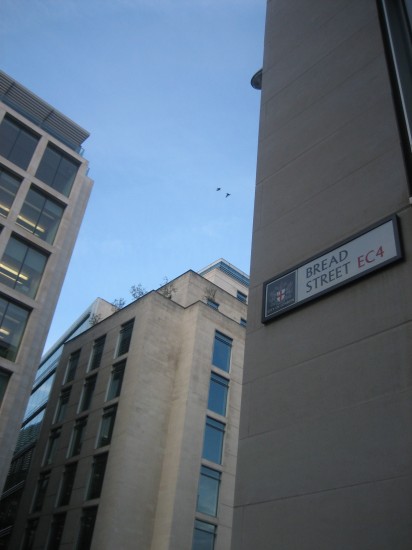
d. Down Queen Victoria Street at rush hour, you hear the clatter and chatter that TS Eliot wrote about nearly a century ago. I turn to his sweet river at Peter’s Hill. I stand for a moment in the spot where St Paul’s Cathedral blooms to the north, and the Millennium Bridge stretches in silver to the south.
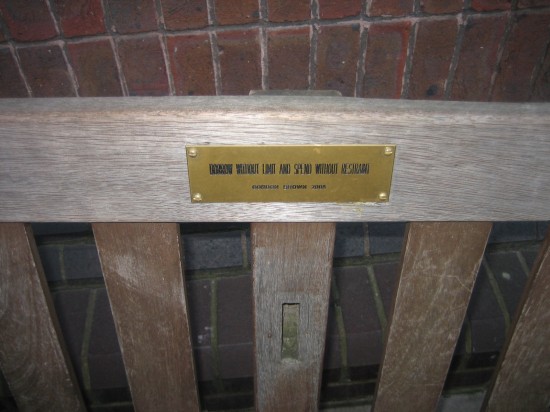
A bench sits nearby, bearing a small gold, plaque. I take a minute to look closer. “Borrow Without Limit, Spend Without Restraint”, it says – Gordon Brown’s mantra to get us out of the recession. Crowds flow over the road, over the bridge, so many, passing this tiny statement, this quiet moment of rage.
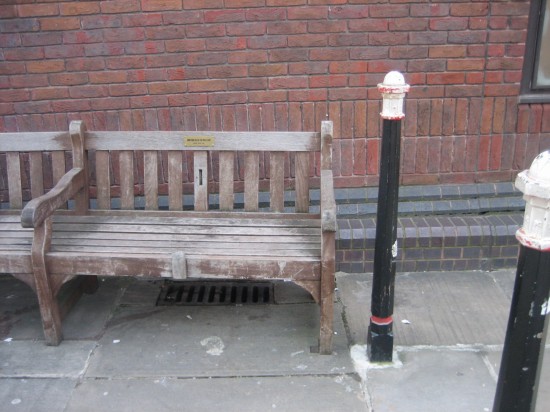
e. The Thames sits high and heavy as I walk towards it. I go west. Cranes rise above Blackfriars Bridge, creaking and croaking like gulls. The London Eye peeks at me from the South Bank as the river bends sharply. Female twins sit outside Temple tube, smoking cigarettes in symmetry. Towards Embankment, old Routemaster buses wait for patiently for tourists, and foreign teenagers take pictures of each other as they sit on the Sphinxes.
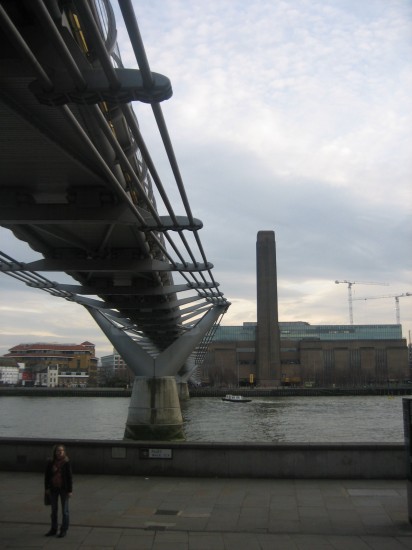
Almost forgotten are the old boats sitting next to the shore, promising partygoers the world on the water. “HMS President: a wedding scene to make your friends envious.” “HQS Wellington: set your event apart from the rest”. How sad I find them, boasting about standing out from the crowd as their tatty canopies fade, and the day starts to darken.
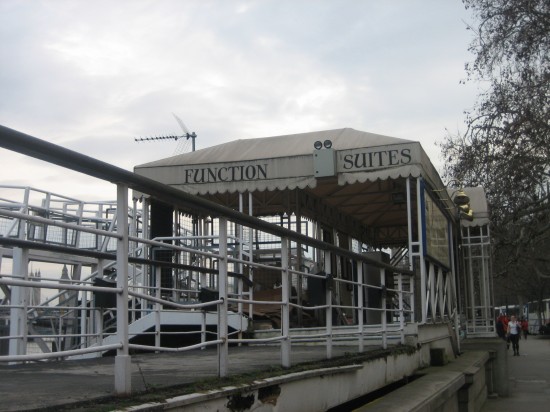
f. Across Northumberland Avenue, I walk on to Whitehall. The clouds settle in. Looking north to Trafalgar Square, the head of the BT Tower is losing its battle with Nelson. I bear west to The Mall, where the central gate is shut as always. Buckingham Palace is sitting far behind the black bars, the approach to it feeling much further than when I was a child.
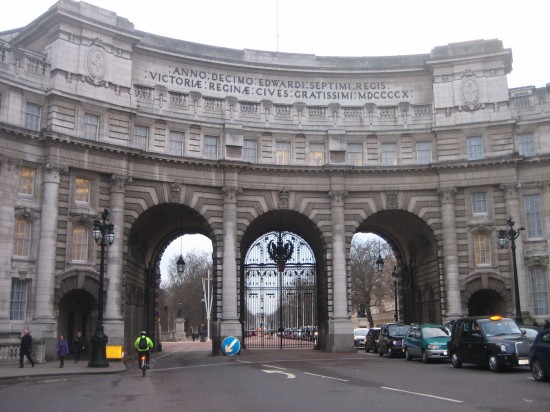
g. Constitution Hill takes me up to Wellington Arch. Hyde Park Corner. Grosvenor Place. Joggers, cars and movement hustle me along. But once I walk into Halkin Street, London changes completely.
No traffic.
No people.
Huge houses bearing no life.
Statues and street corners are underlit softly, pieces of a stage set to be captured in a painting. Belgrave Square announces itself with stony statesmen – a dour Christopher Columbus, a sour Simon Bolivar. Belisha beacons blink at me kindly as I pass them, reminding me for a moment of another, real world.
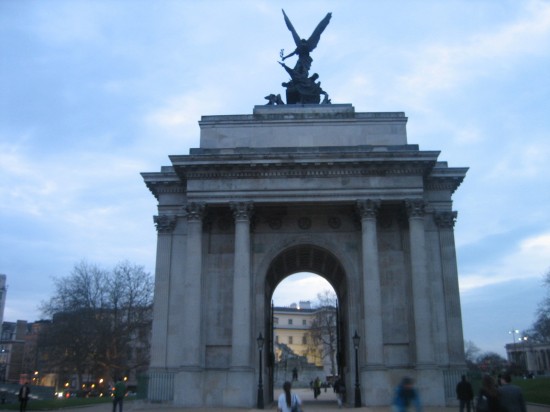

h. Past hotels and embassies, towards Walton Street’s spotlessness. In the precious parade of boutiques and bars, even the dry cleaners looks too beautiful to touch.
I emerge where Brompton Road and Fulham Road come together, and suddenly there it is, an old memory, out of the darkening blue. The Michelin Building. I came here first nearly a decade ago, staggered by its beauty in a photograph, and the memory of the Michelin Man scaring me as a child, leering out of a window of a garage in Kingsbridge, so many worlds away from the majesties of Knightsbridge.
As the night draws in, it is lovelier than ever. It also marks my last mile, and its lights glow like lamps. They guide me towards my destination, brighten up my journey’s end.
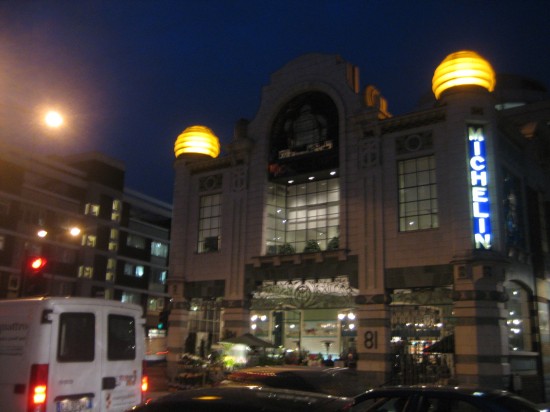
i. On Selwood Terrace, The Anglesea Arms blinks through the darkness. It surrounded by loud, happy people, all of them garrulous and game for the night to begin.
I take a picture of the sign, head in for some wine, a friend guides me outside, and I lean happily, tiredly, against a wall. As we prepare our dancing shoes for the evening ahead, mine need a little rest.
